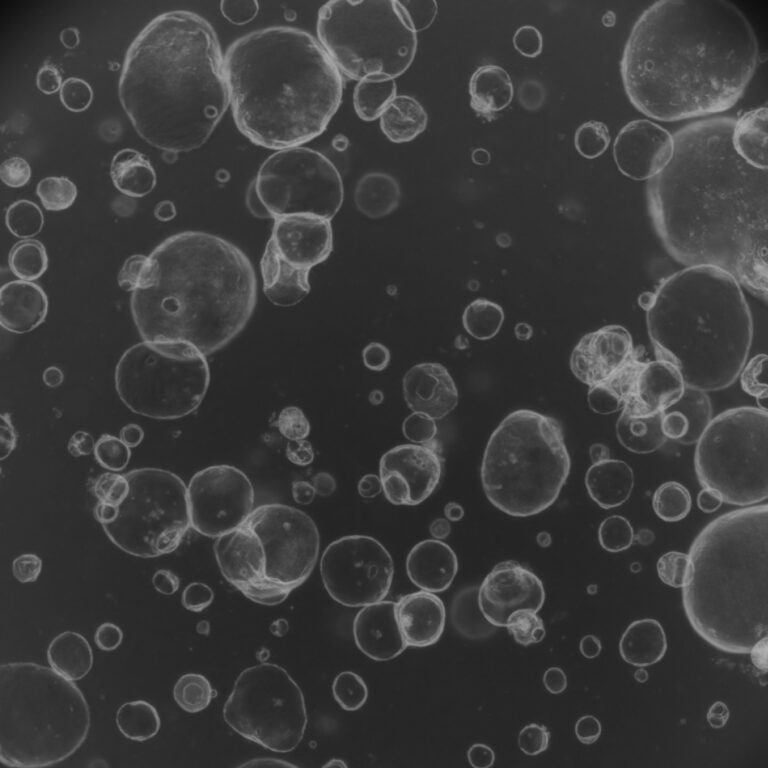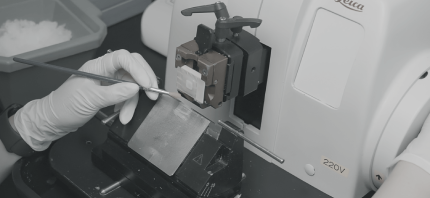Inflammation Triggers Senescent-like Glia in Multiple Sclerosis and Patient-Derived Organoids
Journal: Nature Biotechnology
Author: de Lau, W.B.M., Wijnakker, J.J.A.P.M., van Son, G.J.F. et al., The Netherlands / USA
A research team including Hans Clevers and Timothy A. Springer reports a new single-chain antibody, scTS2/16, that activates integrin β1 to enhance the growth of human epithelial organoids. Current organoid culture methods rely on Matrigel, a xenogeneic and chemically undefined material unsuitable for clinical use. In contrast, scTS2/16 enables strong organoid expansion in both Matrigel and collagen I hydrogels, a well-defined, clinically approved matrix. The addition of scTS2/16 increased organoid yield up to fivefold in Matrigel and six- to sevenfold in collagen I, offering a path toward standardized, clinical-grade organoid production from gastrointestinal and other epithelial tissues.
Inflammation Drives Senescent-like Glia in Multiple Sclerosis
Journal: Nature Communications
Author: Fagiani, F., Pedrini, E., Martire, M.S. et al., Italy /. Belgium / USA
Chronic inflammation in multiple sclerosis (MS) promotes senescent-like glial cells that may accelerate disease progression. Using single-cell and spatial transcriptomics, researchers found these cells concentrated in chronic active lesions with senescence signals spreading into nearby tissue. Patient-derived neural organoids confirmed that microglia are especially vulnerable, though anti-inflammatory drugs can partially reverse this effect. MRI data from 466 patients showed greater brain aging in those with more chronic active lesions, linking inflammation-induced senescence to MS progression.
Proteomic Signatures Reveal Early Risk Markers for Lymphoid Cancer
Journal: Nature Communications
Author: Kolijn, P.M., Smith-Byrne, K., Burk, V. et al., The Netherlands
A large multi-cohort proteomics study identified early blood-based markers linked to lymphoid cancers. Using data from 4,565 participants in the EPIC cohort and profiling 6,412 plasma proteins, researchers found over 500 protein–cancer associations involving pathways such as cytokine signaling, viral interactions, B-cell receptor signaling, and NF-κB activation. Validation in the UK Biobank and ARIC cohorts confirmed most associations. Notably, several protein changes appeared more than 10 years before diagnosis, suggesting that circulating proteomic profiles could enable early detection and risk prediction for lymphoma.
Computationally Designed Synthetic Receptors Boost CAR-T Cell Activity in Tumors
Journal: Nature Biomedical Engineering
Author: Rath, J.A., Rudden, L.S.P., Nouraee, N. et al. , Switzerland
Researchers created a computational platform to design synthetic allosteric receptors with programmable signaling for cancer immunotherapy. The engineered receptors, called TME-sensing switch receptors (T-SenSERs), detect tumor microenvironment (TME) factors such as VEGF and CSF1, converting them into co-stimulatory or cytokine signals that enhance T cell function. When combined with CAR-T cells, T-SenSERs strengthened anti-tumor activity in lung cancer and multiple myeloma models. This work demonstrates how computational protein design can generate custom biosensors to overcome TME suppression and improve next-generation cell therapies.


